Citizen Conservation

How can citizen science contribute to biodiversity research and conservation ?
This article explores the role of citizen science in enhancing biodiversity research and conservation efforts. It highlights how involving the general public in scientific projects can boost data collection, raise environmental awareness, and support conservation initiatives. The article also provides examples of successful citizen science projects that have contributed significantly to understanding and protecting biodiversity.
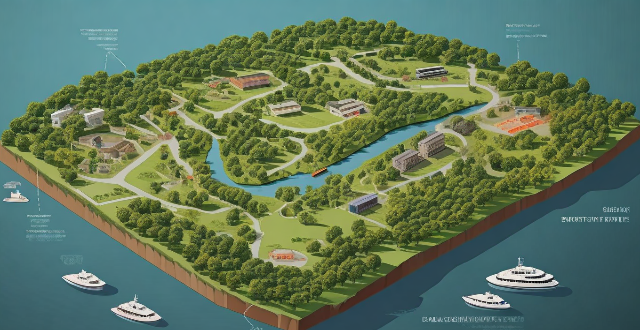
How can ecological protection areas be integrated with other conservation strategies ?
Integrating EPAs with other conservation strategies is crucial for their long-term viability and effectiveness. This involves developing comprehensive landscape approaches, incorporating community-based conservation, enhancing legal frameworks, promoting sustainable development practices, conducting regular research and monitoring, and implementing education and awareness programs. These measures ensure that conservation efforts extend beyond the boundaries of EPAs and into the broader ecosystem, involving local communities, addressing human activities, and fostering a culture of environmental stewardship.
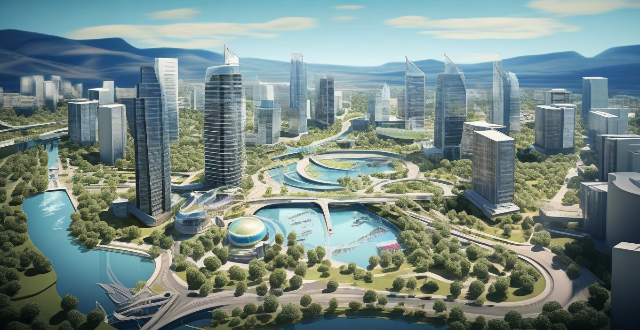
How will the concept of citizen engagement change in future cities ?
This essay explores the future of citizen engagement in cities, influenced by technological advancements like AI and IoT, social media platforms, and demographic changes. Potential changes include increased participation through virtual town halls and online voting systems, greater transparency via open data and public dashboards, and more collaborative approaches such as co-creation workshops and community-led projects. The essay emphasizes the importance of adapting strategies for engaging with citizens to ensure vibrant, inclusive, and sustainable urban communities.
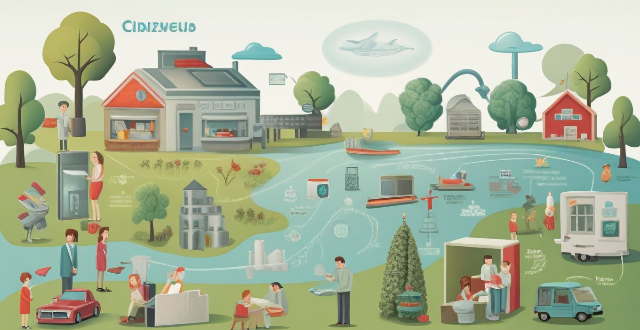
How can citizens participate in environmental monitoring initiatives ?
The text provides a detailed guide on how citizens can actively participate in environmental monitoring initiatives. It suggests joining local conservation groups, volunteering for citizen science projects, utilizing technology, educating and spreading awareness, advocating for policy changes, and collaborating with universities and research institutions as effective ways to contribute. These activities not only aid scientific research but also promote community involvement and responsibility towards the environment.
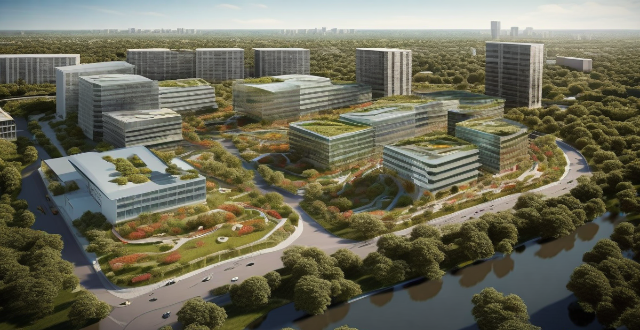
How can urban planning contribute to biodiversity conservation ?
Urban planning is crucial for managing urban growth and ensuring sustainable development. One area where it can make a significant impact is in biodiversity conservation, which is essential for maintaining ecosystem services such as pollination and water purification. Strategies for incorporating biodiversity conservation into urban planning include creating green spaces and parks, promoting sustainable transportation, implementing effective water management practices, encouraging waste reduction and recycling programs, and engaging communities in conservation efforts. By adopting these strategies, cities can become more livable while supporting both human well-being and biodiversity conservation.
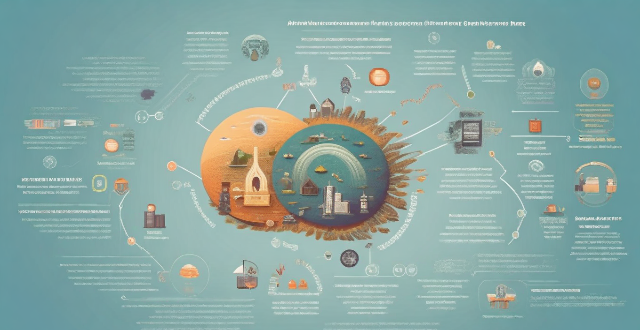
What role do education and awareness play in promoting citizen action on climate change ?
Education and awareness are crucial for promoting citizen action on climate change. They help individuals understand the science, develop skills, foster critical thinking, raise consciousness, mobilize public support, and promote behavioral change. Strategies for enhancing education and awareness include integrating climate change into curricula, community workshops, media campaigns, and partnerships with NGOs and corporations. Investing in education and awareness is essential for creating a more resilient and equitable future.
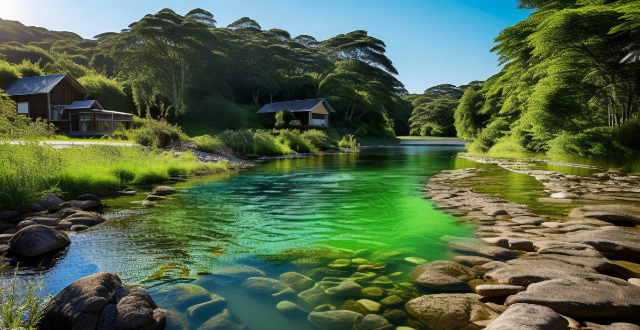
How do I implement water conservation measures at home ?
Water conservation is crucial for sustaining the environment and ensuring future generations have access to clean water. Here's how you can implement water conservation measures in your home: identify areas of water consumption, repair leaks promptly, collect rainwater, educate family members, and regularly review your habits. By implementing these measures, you can significantly reduce your home's water usage and contribute to a more sustainable future for our planet.

What are some examples of successful citizen-led climate initiatives ?
Successful citizen-led climate initiatives play a crucial role in addressing the global climate crisis. These initiatives are often driven by grassroots movements, community organizations, and individuals who are committed to taking action against climate change. Examples of successful citizen-led climate initiatives include renewable energy cooperatives, community gardens and urban farming projects, bike share programs, climate education and advocacy efforts, and waste reduction and recycling programs. These initiatives highlight the importance of collective action and individual responsibility in creating a more sustainable future for all.

What role do governments play in environmental conservation efforts ?
Governments play a crucial role in environmental conservation efforts by creating and implementing policies, regulations, and programs that promote sustainable development and protect natural resources. They can contribute to environmental conservation through legislation and regulation, public awareness campaigns, financial incentives and subsidies, international cooperation, and conservation programs. By taking these actions, governments can help ensure a sustainable future for our planet.

How do climate targets relate to ecosystem conservation efforts ?
The text discusses the interconnection between climate targets and ecosystem conservation efforts, emphasizing that both are essential for a sustainable future. Climate targets focus on reducing greenhouse gas emissions and adapting to climate change impacts, while ecosystem conservation aims to protect biodiversity and maintain ecological processes. The two concepts are closely related, as climate change affects ecosystems, and ecosystems play a role in climate regulation. An integrated approach combining these efforts can lead to more effective outcomes, such as reforestation projects that sequester carbon and provide habitat for wildlife. Collaboration between various stakeholders is crucial for aligning climate targets with ecosystem conservation efforts.
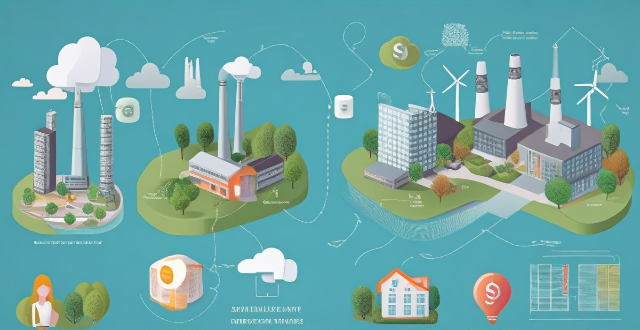
What is the relationship between energy conservation and sustainable development ?
In summary, energy conservation and sustainable development are interconnected concepts that share common goals. Energy conservation involves reducing wasteful consumption of energy resources, while sustainable development aims to balance economic growth, social progress, and environmental protection. The relationship between these two concepts is mutually reinforcing, with energy efficiency being a key component of both. Renewable energy sources, circular economy practices, and effective policy and governance structures are also essential for achieving sustainability goals. By prioritizing these principles, we can work towards a more sustainable future for ourselves and future generations.
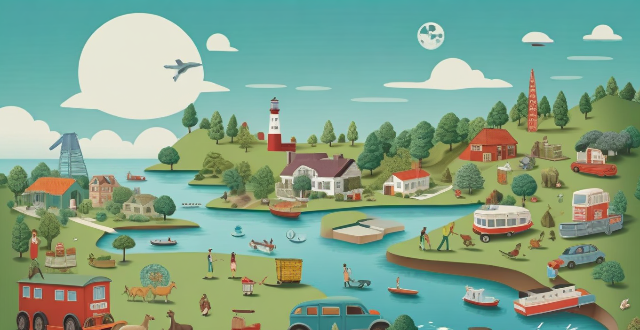
How can cities encourage citizen participation in greening projects ?
This article discusses various strategies that cities can adopt to encourage citizen participation in greening projects, including education and awareness, volunteer opportunities, incentives and recognition, and collaboration with local organizations. By implementing these strategies, cities can create vibrant, sustainable environments that benefit both residents and the planet.

How does ecological design contribute to biodiversity and conservation efforts ?
Ecological design is a crucial approach to enhancing biodiversity and supporting conservation efforts. It integrates principles of ecology and sustainability into the built environment, aiming to minimize negative impacts on natural ecosystems while promoting their health and resilience. Ecological design contributes to these vital efforts by minimizing habitat destruction, promoting ecosystem services, enhancing connectivity, supporting conservation efforts, and implementing best practices. By integrating ecological principles into the built environment, we can create spaces that coexist harmoniously with nature, contributing to a future where both humanity and wildlife thrive.
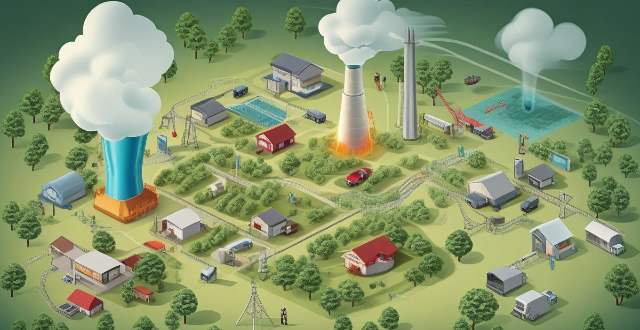
What is the relationship between waste reduction and energy conservation ?
The article discusses the relationship between waste reduction and energy conservation, highlighting their importance in promoting sustainable development. Waste reduction strategies such as recycling, composting, reusing materials, and reducing packaging conserve natural resources, reduce landfill space, and lower greenhouse gas emissions. Energy conservation measures like using energy-efficient appliances, improving insulation, and promoting renewable energy sources lead to lower energy costs, reduced greenhouse gas emissions, and promote sustainable development. The practices are interconnected, with recycling saving energy, composting reducing energy use, reducing packaging saving energy, energy-efficient appliances reducing waste, and promotion of renewable energy sources conserving energy and reducing waste.

What is the role of education in raising awareness about biodiversity conservation ?
Education plays a vital role in promoting awareness and understanding of biodiversity conservation. It fosters environmental stewardship, enhances scientific literacy, develops critical thinking skills, builds empathy, informs policy decisions, fosters interdisciplinary approaches, and generates public support for conservation efforts. Actionable steps include curriculum integration, hands-on learning experiences, interdisciplinary collaboration, community outreach, lifelong learning opportunities, research support, partnerships with organizations, technology use, international collaboration, and monitoring and evaluation to ensure continuous improvement in educational programs aimed at biodiversity conservation.
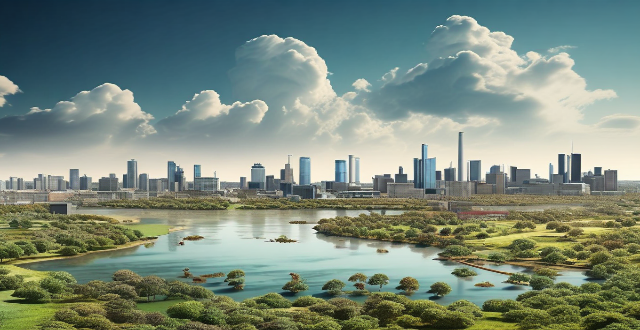
What is the impact of climate change on biodiversity and conservation law ?
Climate change is a significant threat to biodiversity, affecting species distribution, abundance, and behavior. This has implications for conservation law, which aims to protect and manage biodiversity. The impact of climate change on biodiversity includes habitat loss and fragmentation, altered ecosystem functioning, and increased risk of species extinction. Conservation law must evolve to address these challenges, incorporating resilience measures into conservation strategies and fostering collaboration across sectors. By taking a proactive approach, we can help ensure that future generations continue to benefit from the diverse array of species and ecosystems that make up our planet's natural heritage.

How do climate policies intersect with other environmental initiatives, such as biodiversity conservation ?
The text discusses the intersection of climate policies and biodiversity conservation, highlighting the importance of integrating these initiatives for a sustainable future. It emphasizes reducing greenhouse gas emissions, protecting ecosystems, promoting sustainable land use practices, encouraging collaboration, and integrating climate change into biodiversity conservation strategies as key points of intersection. The benefits of integration include enhanced ecosystem resilience, improved carbon sequestration, increased public awareness, more efficient use of resources, and greater policy coherence.

Can I participate in any volunteer programs related to wildlife conservation during my travels ?
Participating in wildlife conservation volunteer programs during travels offers a chance to contribute to important conservation efforts while gaining a deeper understanding of the natural world and its challenges. Options include working in national parks, wildlife sanctuaries, marine conservation projects, research initiatives, and community-based conservation efforts worldwide. To get involved, one should research, contact organizations, prepare for the physical and emotional demands, commit by arranging travel plans and financial contributions, and finally participate in the program.
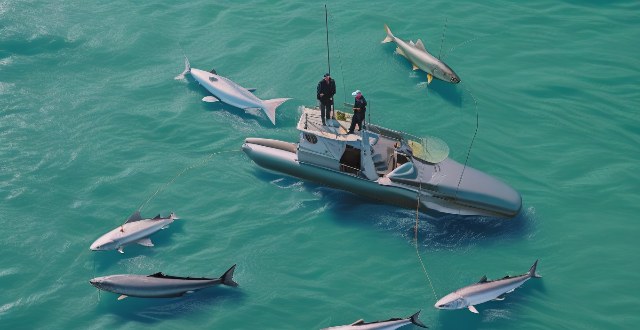
Are there any international agreements or policies addressing the interplay between climate change and the conservation of fisheries ?
The interconnected issues of climate change and fisheries conservation are addressed through various international agreements and policies. The UNFCCC aims to stabilize greenhouse gas concentrations, indirectly supporting fisheries conservation. UNCLOS provides a legal framework for ocean governance and resource management, promoting cooperation in managing fish stocks. The CBD focuses on biodiversity conservation and sustainable use of resources, acknowledging the impacts of climate change on ecosystems vital for fisheries. RFMOs manage fisheries in specific regions, incorporating climate change considerations into their strategies. National policies integrate climate action with fisheries conservation measures. Together, these frameworks work towards sustainable management of climate change and fisheries conservation.

How does eco-tourism contribute to conservation efforts ?
Eco-tourism, or ecological tourism, plays a crucial role in conservation efforts by fostering sustainable practices and raising awareness about the importance of preserving biodiversity and ecosystems. It contributes to conservation in several ways: 1. **Raising Environmental Awareness**: Informed decision-making and behavior changes support conservation goals through educational opportunities provided during eco-tourism experiences. 2. **Direct Conservation Funding**: Fees for park entry, donations to local conservation groups, and investments in infrastructure that benefits both tourists and wildlife directly fund conservation projects. 3. **Encouraging Sustainable Practices**: By promoting eco-friendly transportation, recycling, composting, and community involvement in sustainable practices, eco-tourism reduces the overall environmental footprint of tourism activities. 4. **Supporting Local Economies**: Eco-tourism supports local economies, creating an incentive for communities to protect their natural resources as they rely on them for income. 5. **Protecting Habitats and Biodiversity**: Attracting visitors to protected areas or regions where conservation is a priority helps maintain healthy ecosystems and diverse wildlife populations. Overall, eco-tourism demonstrates that tourism can be a force for good when it operates with a focus on ecological sustainability and community involvement.

What policies can promote sustainable urban development ?
Sustainable urban development is crucial for creating livable, healthy, and prosperous cities. Here are some policies that can promote sustainable urban development: 1. Green Infrastructure: Promote green spaces, implement green roofs and walls, develop urban agriculture. 2. Energy Efficiency and Renewable Energy: Encourage energy-efficient buildings, promote renewable energy sources, implement smart grid technology. 3. Transportation: Improve public transportation, encourage active transportation, promote carpooling and ridesharing. 4. Waste Management: Implement recycling programs, encourage composting, promote zero waste initiatives. 5. Water Management: Implement water conservation measures, manage stormwater runoff, protect natural water resources. 6. Community Engagement: Encourage citizen participation, support local businesses, foster a sense of community.

How can we promote public awareness and participation in water resource management ?
Water resource management is crucial for communities worldwide, and promoting public awareness and involvement is key. Strategies include education campaigns, public participation initiatives, incentives, and collaboration with local government and businesses. These efforts aim to increase knowledge, encourage active participation, and foster conservation and sustainability.

What strategies can be employed to mitigate the negative effects of urbanization on the environment ?
### Strategies to Counteract Urbanization's Environmental Impact Urbanization presents significant environmental challenges, including pollution, deforestation, and biodiversity loss. However, these issues can be mitigated through various strategies: 1. **Sustainable Transport**: Improve public transit, invest in non-motorized transport infrastructure, and encourage electric vehicles. 2. **Green Building Practices**: Implement energy-efficient designs, use green roofs/walls, and promote recycled materials. 3. **Waste Management**: Adopt a reduce-reuse-recycle approach, compost organic waste, and manage e-waste. 4. **Water Conservation**: Encourage rainwater harvesting, use water-efficient appliances, and manage stormwater effectively. 5. **Urban Green Spaces**: Develop parks, urban forestry, and ecological corridors to support biodiversity and improve air quality. 6. **Energy Efficiency**: Conduct energy audits, promote renewable energy sources, and implement smart grid technology. 7. **Environmental Education**: Organize community workshops, integrate education into school curricula, and engage the public in citizen science projects. Collaboration among governments, businesses, and citizens is crucial for creating sustainable urban environments.
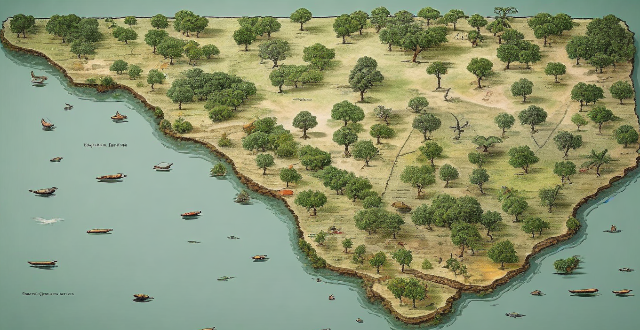
How do ecological protection areas contribute to biodiversity conservation ?
Ecological protection areas contribute significantly to the conservation of biodiversity by preserving habitats, protecting endangered species, maintaining genetic diversity, mitigating climate change, and promoting education and awareness. These areas are crucial for the long-term survival of ecosystems and the diverse range of species that depend on them.

How can ecological protection areas contribute to environmental education and awareness ?
Ecological protection areas are crucial for both biodiversity conservation and environmental education. These areas offer hands-on learning experiences, interactive programs, sustainable practice promotion, community outreach, research efforts, and media publicity to raise awareness about the importance of preserving ecosystems. Through these initiatives, ecological protection areas can inspire individuals to adopt eco-friendly habits and contribute to global conservation efforts.
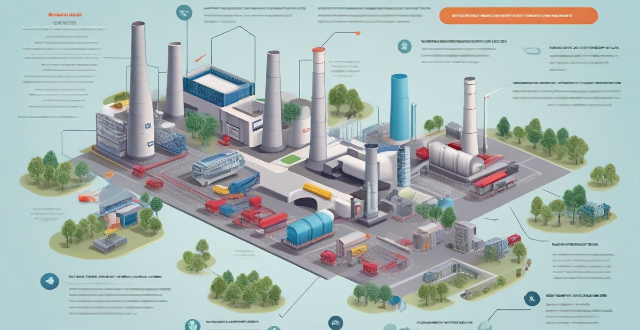
How do clean production technologies impact energy efficiency and conservation ?
Clean production technologies significantly enhance energy efficiency and conservation by reducing waste, optimizing processes, integrating renewable energy, monitoring energy consumption, and promoting product longevity. These strategies not only conserve energy but also align with broader sustainable development goals, offering economic benefits, environmental stewardship, and social responsibility.

How can governments encourage citizens to adopt energy-saving measures ?
Governments can encourage citizens to adopt energy-saving measures through various strategies such as education and awareness programs, incentives and subsidies, regulations and standards, and research and development. These efforts include public education campaigns, workshops and training programs, financial incentives, subsidies for renewable energy, building codes and energy efficiency regulations, funding for research, and support for clean energy startups. By employing these strategies, governments can effectively motivate citizens to save energy, contributing to the global effort to combat climate change and ensure sustainable development.
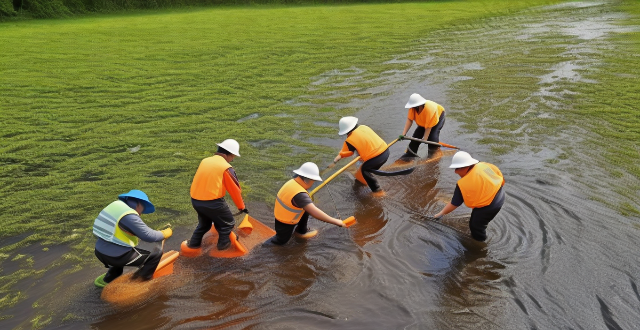
What are the most effective strategies for managing water resources during droughts ?
Effective strategies for managing water resources during droughts include rainwater harvesting, water conservation, reusing wastewater, and public awareness campaigns. Rainwater harvesting helps reduce dependence on groundwater and surface water sources, while water conservation practices such as fixing leaks and using low-flow fixtures can significantly reduce water consumption. Reusing treated wastewater for non-potable purposes also helps conserve freshwater sources. Public awareness campaigns play a crucial role in educating people about the importance of water conservation and encouraging them to adopt efficient practices and technologies. By adopting these strategies, we can minimize the impact of droughts on people, agriculture, and the environment while ensuring sustainable water management for future generations.
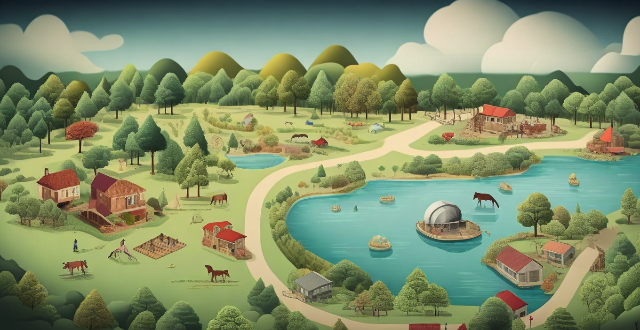
What is the relationship between ecological protection areas and traditional knowledge and practices ?
Ecological protection areas and traditional knowledge and practices are interconnected, with the latter serving as a vital resource for conservation efforts. These areas often contain valuable traditional knowledge developed by indigenous communities, which can aid in their effective management. Traditional knowledge encompasses agricultural practices, medicinal plants, sustainable hunting and fishing techniques, and land management methods. Ecological protection areas aim to preserve biodiversity and ecosystem services through legal means like national parks and nature reserves. The intersection of these two realms offers benefits for both conservation and cultural preservation, encourages community engagement, and creates economic opportunities through ecotourism. Integrating traditional knowledge into conservation strategies can lead to more effective and culturally sensitive management of ecological protection areas while preserving the cultural heritage of indigenous peoples.
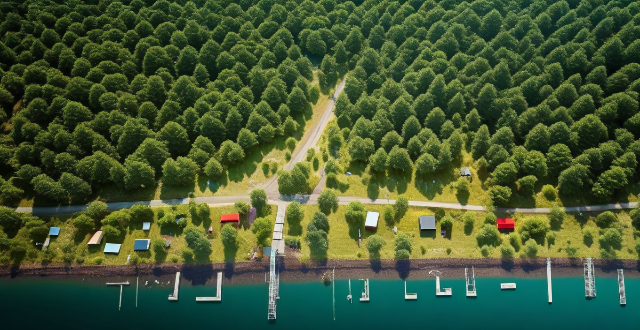
What are the key sectors that need to focus on climate adaptation ?
The key sectors that need to focus on climate adaptation include agriculture, forestry, coastal areas, water resources, and energy production. In agriculture, crop diversification, water management, and soil conservation are crucial practices. In forestry, sustainable forest management, fire prevention, and biodiversity conservation are essential. Coastal protection, ecosystem restoration, and fisheries management are critical in coastal areas. Water conservation, flood control, and groundwater management are vital for water resources. Finally, investing in renewable energy, improving energy efficiency, and developing carbon capture and storage technologies are crucial for energy production. By focusing on these sectors, we can build resilience against climate change and ensure a sustainable future.